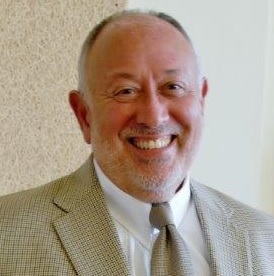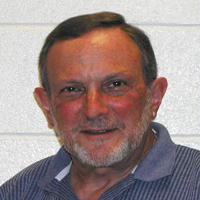Submitted by achenault on Wed, 06/17/2015 – 4:57pm
Ohio needs well-trained mid-level dental providers to improve our oral health so Ohioans can lead healthy, productive lives. But in order to introduce a new type of dental provider, we also need education standards (preferably national ones). Education standards guide community colleges and state universities in developing training programs for the new providers. Without education standards, colleges and universities have been unable to take the steps necessary to set up a program to educate and train Dental Therapists to practice in Ohio. But now the void has been filled.
Recently, the Commission on Dental Accreditation (CODA), the nationally recognized accrediting body for dental and dental-related professions, took a historic step to adopt Accreditation Standards for Dental Therapy Education Programs. That means Ohio educational institutions will now have the guidance they need to craft training programs to ensure the delivery of safe, effective routine dental care through Dental Therapists. Weighing in on this decision, Dr. Edward Sterling, DDS of Dublin, OH said, “The Commission on Dental Accreditation establishment of training standards for Dental Therapists is a critical step… Now, training goals and standards are established and can be measured to assure they are met – the same way it is done throughout all of dental education.”
We’re not in the clear yet, though. CODA is delaying implementation of the Standards while gathering more data on 2 remaining questions:
Community Catalyst, our national partner in this project, sent a letter in early June which included signers from over 100 organizations and individuals, including 38 from Ohio, providing CODA with documentation which addressed these questions and calling on CODA to implement the Standards. This information will be considered at the August 7, 2015 meeting of the Commission.
We’re hoping that CODA will vote to implement the education standards so Dental Access Now! can continue to work with Ohio community colleges to develop their programs to train end educate Dental Therapists here in Ohio.
Submitted by achenault on Wed, 10/22/2014 – 12:00pm
Three Ohio dentists who are leaders in providing quality dental care to all Ohioans have traveled to Alaska to review the education program for the Dental Health Aid Therapists.
We asked them recently to reflect on their experience and help paint the picture of how Dental Therapists can be part of the solution to solve Ohio’s oral health crisis.
 |
Dr Hill is the retired dental director of the Cincinnati Health Department and is the Executive Director of the American Association for Community Dental Programs |
 |
Dr. Ed Sterling, DDS, was the director of The Ohio State University Nisonger Center IDD Dental Program for 39 years. While leading the dental program, he served more than 10,000 children and adults with intellectual and developmental disabilities, and taught thousands of dental students and dental hygiene students; general practice dental residents in Ohio State’s College of Dentistry and pediatric dental residents from Nationwide Children’s Hospital how to provide best practice dental care to children and adults with disabilities |
 |
Dr. Barry Gibberman has been helping patients have the smile of their dreams for over 30 years. He was recruited to Cincinnati from his native New York City by Procter and Gamble where he helped manage clinical trials for Crest toothpaste. He left P&G to pursue a career in Family dental practice. |
Why were you interested in going on the trip?
Dr. Gibberman: Through a longtime friendship with a public health dentist in Cincinnati, I was introduced to the DHAT concept at several lectures and meetings over the past 2 years. It seemed very intriguing to me and I did not completely understand the resistance to the concept by organized dentistry. Seeing the program first hand would give me a much better appreciation of the issues surrounding the DHAT controversy. So I decided to go!
Dr. Hill: My first trip to Alaska was in 2007. I had first heard about the New Zealand program and those in other countries and their success in 1976. Being a public health dentist, I was aware that every attempt made in the US to pilot similar models had been thwarted by the American Dental Association. My career has been devoted to creating access to oral health care for low income, uninsured and underinsured folks. At the time I went to Alaska, at the invitation of two Alaska foundations, along with representatives of the American Dental Association, the American Public Health Association and others, the Alaska Dental Association and the American Dental Association had filed a law suit against the Alaska Native Tribal Health Consortium in an attempt to once again stop any attempts to implement this model.
Dr. Sterling: l was interested in the trip in order to see the program “up close.” I had read about it and we have had discussions but to see it adds another dimension.
What were your expectations before you went on the trip?
Dr. Gibberman: I expected to see competent, well trained, young para-professionals treating young and adult patients. I expected to see basic dental services performed well–
Dr. Hill: My expectation was to be able to see the curriculum and teaching/training facilities, observe students and therapists at work, examine the quality of their work and speak with residents of Alaska to get a sense of the attitudes of the general population. I went with an open mind, without preconceptions of any of the above. I have now been to Alaska three times to make my observations, each time with a different group of dentists, some more skeptical than others, who were going for the first time. Each time, I wondered what their response would be.
Dr. Sterling: My expectations were that there was a training and a clinical program – beyond that, I didn’t have much in mind.
How was the reality of the program different from your expectations?
Dr. Gibberman: The reality of the program exceeded my expectations. The DHATs were mature young to middle age adults who took the jobs very seriously. They were well trained, had excellent supervision, spent a great proportion of their time building relationships in the communities in which they worked and managed to inspire other young villagers to consider entering training programs which could improve their future livelihood.
Dr. Hill: The reality was extremely gratifying. I found the training to be exemplary, the students to be both passionate and compassionate. The quality of the treatment being provided was at least comparable to that provided by young dentists I had hired as dental director for the Cincinnati Health Department. The facilities were almost exact duplicates of those we had in our public health system, with excellent equipment and ADA approved materials.
And interestingly, I had opportunities to speak with residents who found the program extremely helpful and couldn’t understand all the controversy. One mother told me that before therapists she couldn’t afford dental care for her whole family. She had to pick and choose, depending on her personal resources and who she thought was the highest priority, who could get dental care. She always fell to the bottom of the family list and had been in great need of care until her community got therapists. On each of my second and third trips, every dentist left Alaska convinced of the quality of care, appropriateness of care and the value therapists would have in the Lower 48.
Dr. Sterling: I was quite impressed with the DHATs. Their commitment and their sacrifices to participate in the program – and there were significant sacrifices; the length of the training time, the distance from family – were readily apparent. They were mature beyond their ages and quite sophisticated, not only in their presentations, but in their manner. They were younger than most of the dental students I have dealt with yet, far more mature. The technology in use is impressive and their equipment is newer than in my office – certainly newer than I anticipated. The organization is outstanding. The didactic materials are very well organized and I was quite pleasantly surprised to greet two former OSU students who are the primary didactic instructors (Dr. Mary Williard and Dr. Sarah Shofstall).
The supervising dentist determines what procedures the DHAT is permitted; it is individualized based on the supervising dentist’s assessment of the individual DHAT. The quality of the care provided was excellent and the level of caring for their patients was obvious. I would have liked to have observed some of the restorative care provided.
The student selection process is quite rigorous, as it should be. The supervising dentists I encountered were committed to their roles as a teacher, a mentor and the responsible party for what was done. I was surprised at the number of patients who have been served by the program – it is impressive.
The recertification process is also quite rigorous with 80 hours of direct supervision every two years; this is in addition to continuing education requirements. That is far more rigorous than any dental health professional faces in Ohio.
What would having dental therapists in Ohio mean for Ohioans?
Dr. Gibberman: DHATs in Ohio could seriously improve access to care. One dentist supervising multiple DHATs could serve many patients needing care at a potentially lower cost than individual dentists- in remote as well as inner city areas which are currently underserved.
Dr. Hill: Dental programs that are currently threatened with staff reductions and reductions in capacity as costs continue to rise and Medicaid rates remain stagnant (no increase in almost 15 years), will have an opportunity to restructure delivery of services in a less expensive, more cost effective manner. Other programs will be able to consider expanding services. I can think of community health centers that have facilities that would allow for more staff, but currently more staff means bigger financial losses for the center. Therapists would make program expansions possible.
It would mean that care could be accessible to those living in rural and geographically isolated areas, as in southwest Ohio. And, by recruiting dental therapy students from these communities, with some incentives to return, it would assure these communities that dental care was accessible and continuous
Dr. Sterling: Dental therapists would certainly be an asset in Ohio. Dental therapists are competent, capable professionals. They can augment community programs that have great difficulty meeting the salary requirements of the dentists they employ. It is hard to locate dentists and harder to keep them. Medicaid fees have not changed since 2000. This is a de facto decrease since all other costs; e.g. materials, staff, equipment and utilities have all increased.
I view dental therapists as potential practice extenders. They would be an asset to private practices, as well. They can be a parallel provider within a defined scope of practice. Dental therapists would certainly make it possible for significantly more people to receive needed dental care. They would provide continuity and consistency to the delivery of dental care, including health guidance – something that is not available to many Ohioans today.
Dental care should not depend on a feel good one day a year program. Certainly there can be acute situations in dentistry but, for the most part, we are dealing with chronic conditions and chronic needs; these require continuity. One day a year, one month a year, sealants and fluoride varnishes will not meet the need. With the use of technology, supervision can be “direct” even when distant.
Submitted by achenault on Wed, 01/14/2015 – 2:08pm
We are grateful for your generous gifts in the last weeks of 2014. Thanks to your support, UHCAN Ohio will continue, in 2015, to build the consumer voice to shape health care polices and develop solutions to meet Ohioans’ needs.
In 2015, we will:
From the bottom of our hearts, we thank you for taking your commitment to make health care work for all Ohioans to the next level by donating to UHCAN Ohio.